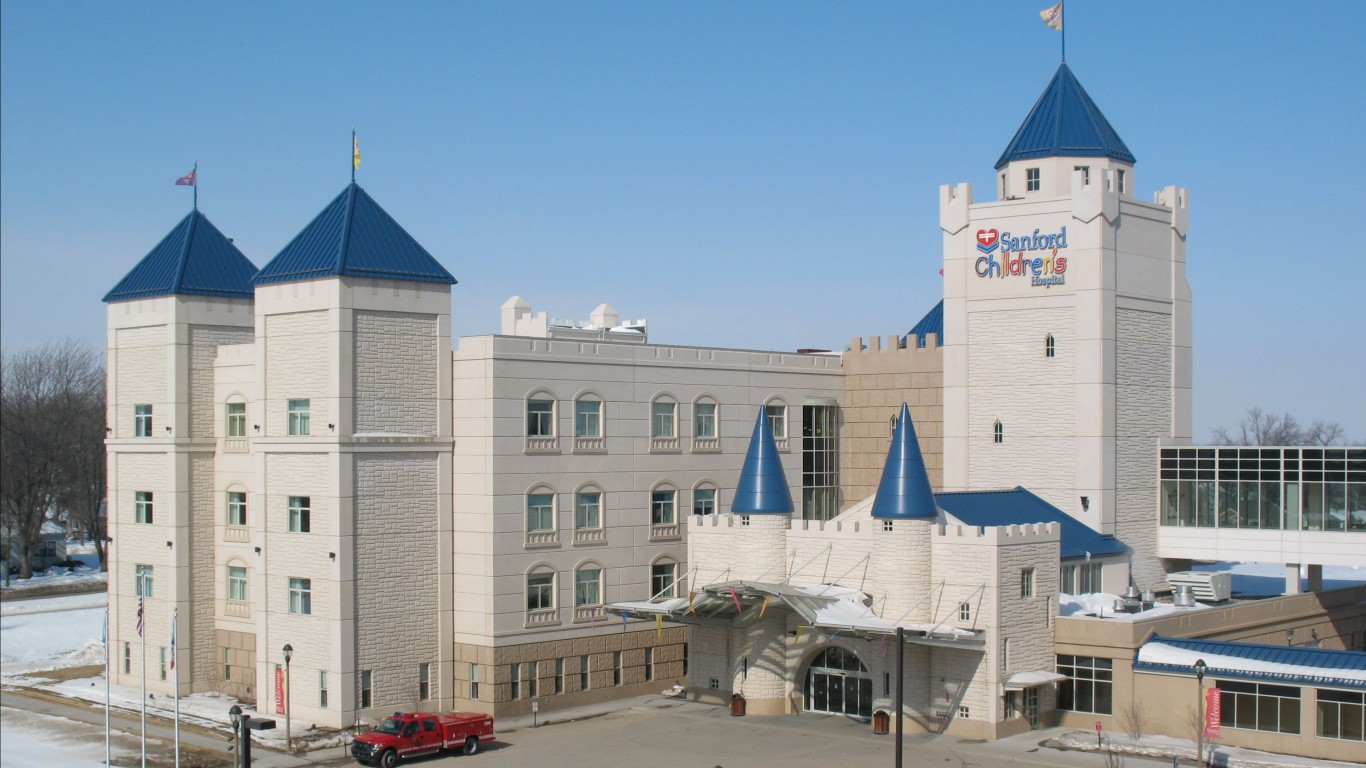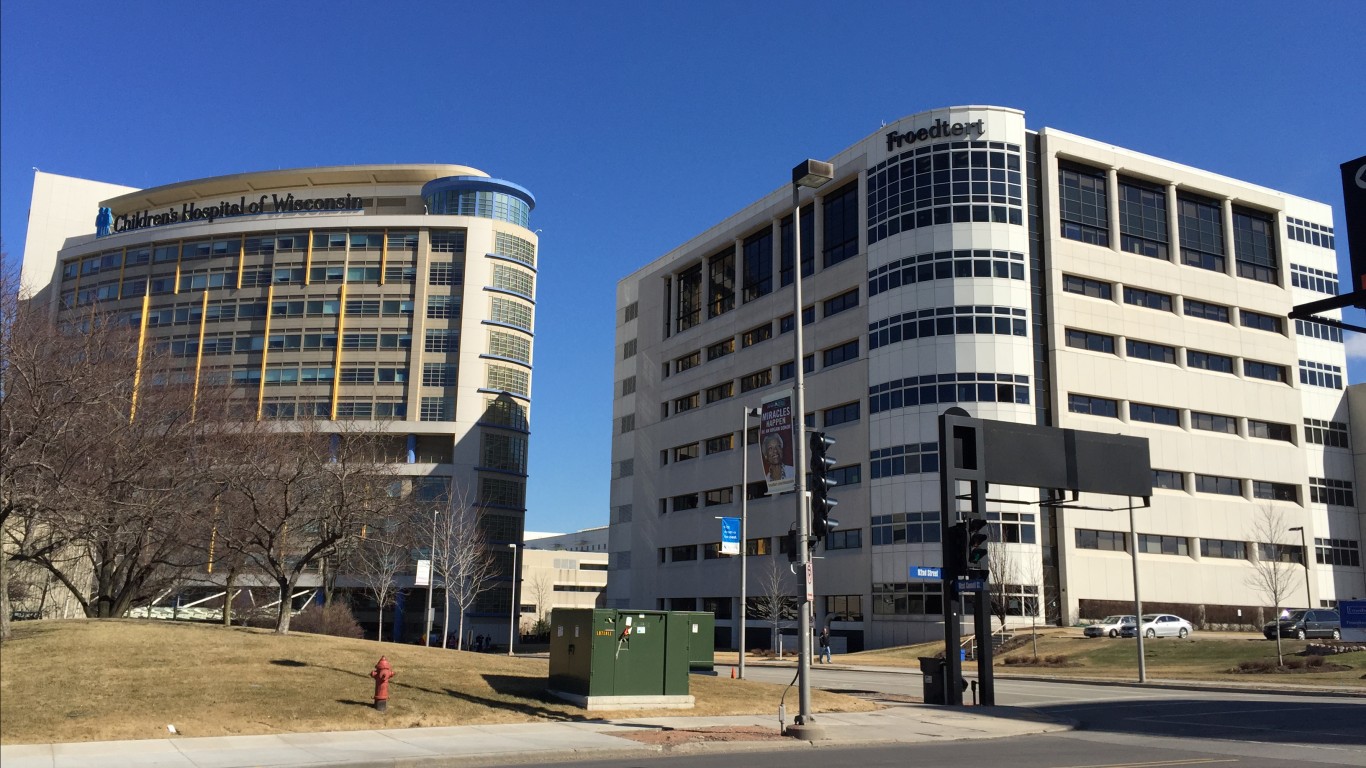
The United States is entering what may be its worst flu season in over a decade. According to weekly data published by the Centers for Disease and Control and Prevention, respiratory symptoms including fever, cough, and sore throat were reported in 7.5% of all visits to health care providers during the week ending November 26, 2022.
The percentage, used by the CDC to measure flu-, or influenza-like illnesses (ILI), is well above the national baseline of 2.5%, and has already surpassed peak levels of past flu seasons in the U.S. The incidence of respiratory illness is exceptionally higher than the rate observed in week 47 during every previous season since 2010-2011. (These are the worst epidemics and pandemics in history.)
Multiple respiratory viruses, including influenza, but also SARS-CoV-2 (the virus that causes COVID-19), and respiratory syncytial virus (RSV), are co-circulating. (See how COVID fatality rates compare with other diseases.)
According to estimates from the Centers for Disease Control and Prevention, there have been at least 8.7 million illnesses, 78,000 hospitalizations, and 4,500 deaths from flu so far this season.
The seven states with the highest incidence of flu-like illness last week all reported rates of 10% or greater. New Mexico (14.3%), Tennessee (13.6%), Washington (12.9%), Kentucky (11.0%), Ohio (10.7%), Nebraska (10.6%). Two additional jurisdictions, Washington D.C. (12.9%) and Puerto Rico (13.2%) also reported among the worst incidence of the flu so far this season.
Click here to see how bad the flu season is in every state
Click here to read our detailed methodology
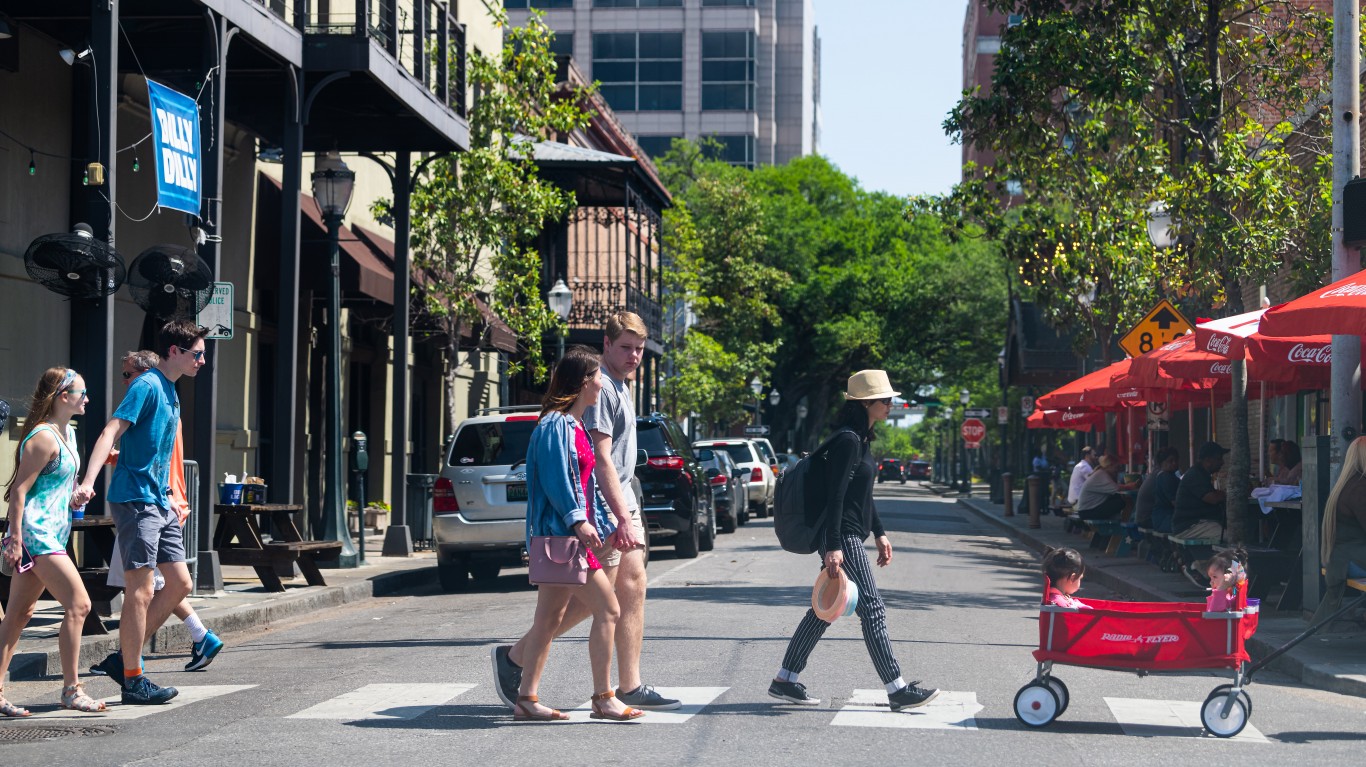
Alabama
> Flu-like illness activity level: Very High
> Flu-like symptoms in week ending Nov 26: 7.5% of 45,337 patients
> Flu activity baseline during offseason for Region 4: 3.1% of patients
> 65 and over population: 17.6% (23rd highest)
> 5 and under population: 5.8% (18th highest)
[in-text-ad]
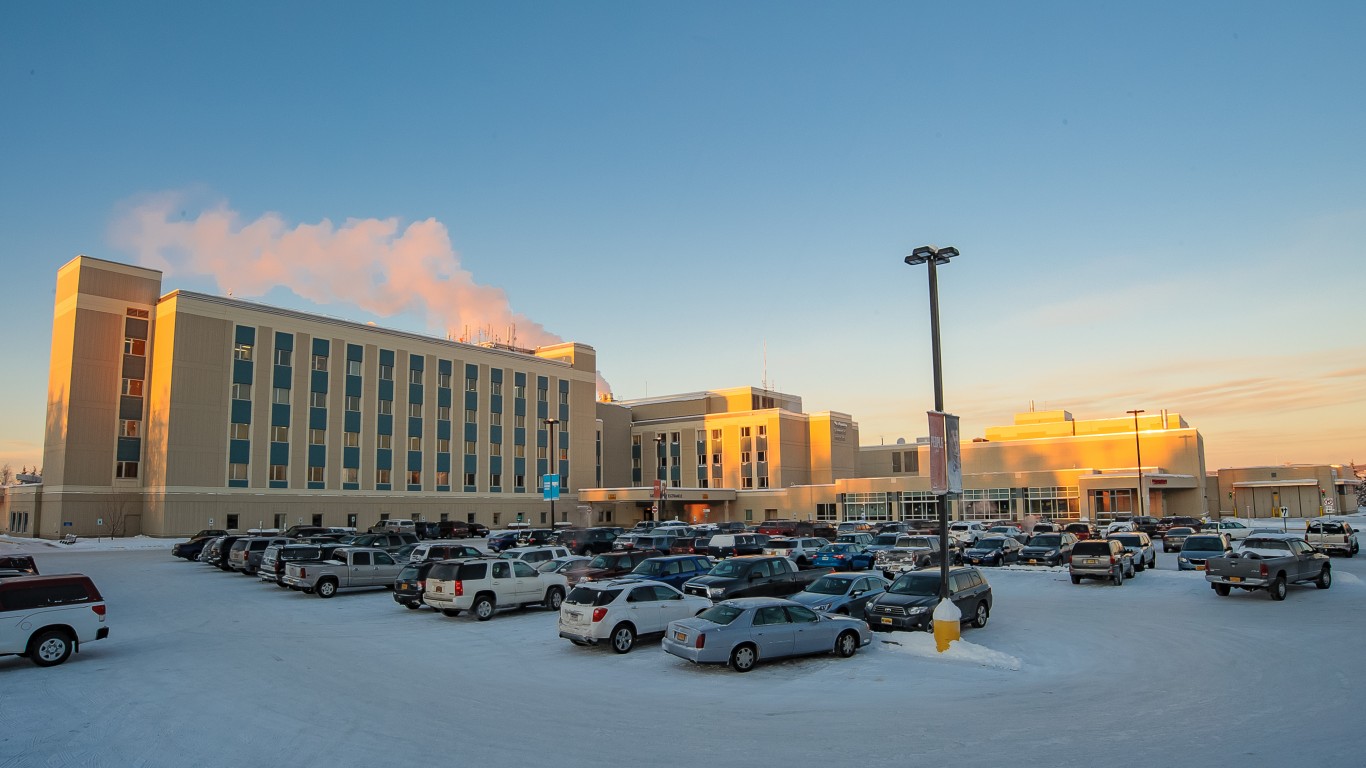
Alaska
> Flu-like illness activity level: Low
> Flu-like symptoms in week ending Nov 26: 3.7% of 4,388 patients
> Flu activity baseline during offseason for Region 10: 1.8% of patients
> 65 and over population: 13.4% (4th lowest)
> 5 and under population: 6.3% (6th highest)
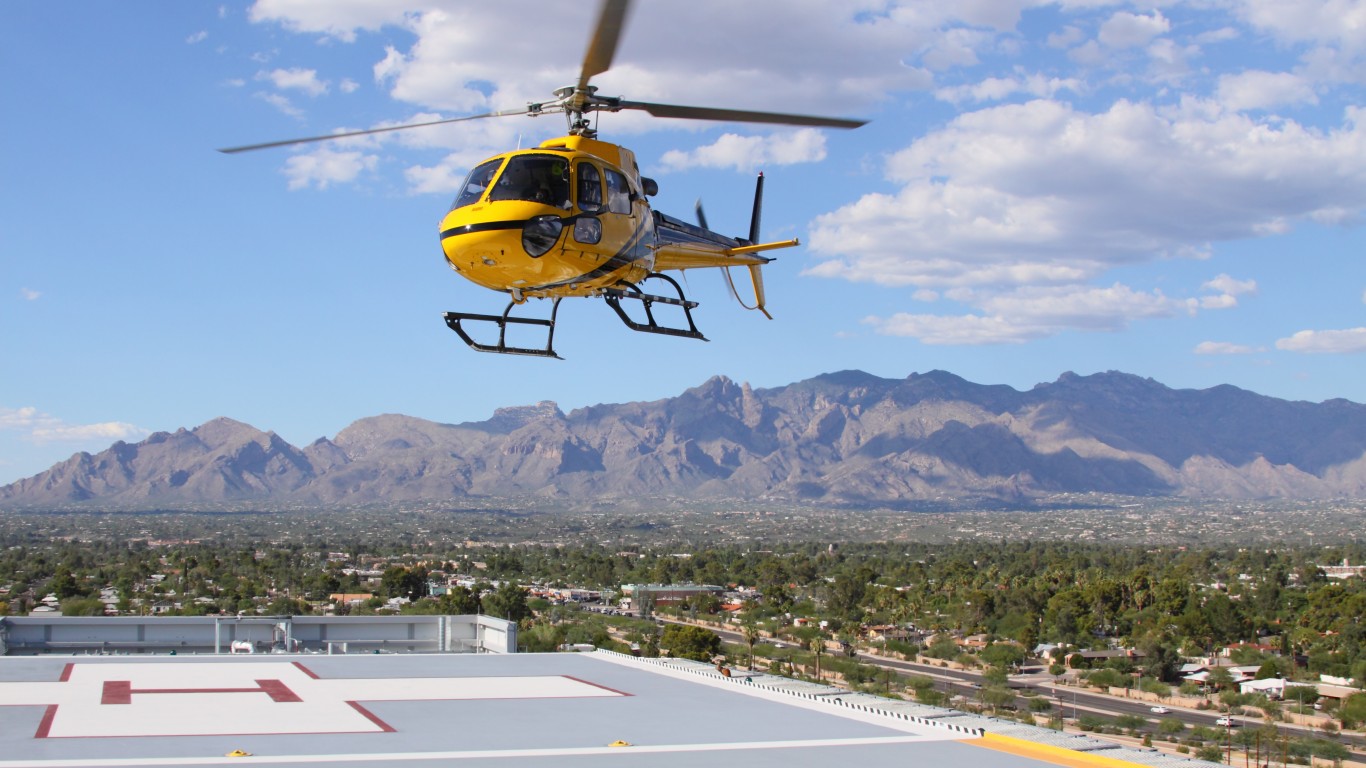
Arizona
> Flu-like illness activity level: High
> Flu-like symptoms in week ending Nov 26: 5.0% of 20,159 patients
> Flu activity baseline during offseason for Region 9: 2.4% of patients
> 65 and over population: 18.3% (13th highest)
> 5 and under population: 5.5% (21st lowest)

Arkansas
> Flu-like illness activity level: Very High
> Flu-like symptoms in week ending Nov 26: 8.0% of 16,711 patients
> Flu activity baseline during offseason for Region 6: 3.9% of patients
> 65 and over population: 17.4% (26th highest)
> 5 and under population: 5.9% (13th highest)
[in-text-ad-2]

California
> Flu-like illness activity level: Very High
> Flu-like symptoms in week ending Nov 26: 8.8% of 247,771 patients
> Flu activity baseline during offseason for Region 9: 2.4% of patients
> 65 and over population: 15.2% (7th lowest)
> 5 and under population: 5.6% (25th highest)

Colorado
> Flu-like illness activity level: Very High
> Flu-like symptoms in week ending Nov 26: 9.5% of 49,036 patients
> Flu activity baseline during offseason for Region 8: 2.8% of patients
> 65 and over population: 15.1% (6th lowest)
> 5 and under population: 5.3% (14th lowest)
[in-text-ad]

Connecticut
> Flu-like illness activity level: Very High
> Flu-like symptoms in week ending Nov 26: 7.1% of 46,797 patients
> Flu activity baseline during offseason for Region 1: 2.0% of patients
> 65 and over population: 18.0% (16th highest)
> 5 and under population: 4.9% (5th lowest)

Delaware
> Flu-like illness activity level: High
> Flu-like symptoms in week ending Nov 26: 3.6% of 10,924 patients
> Flu activity baseline during offseason for Region 3: 2.1% of patients
> 65 and over population: 20.1% (5th highest)
> 5 and under population: 5.3% (13th lowest)
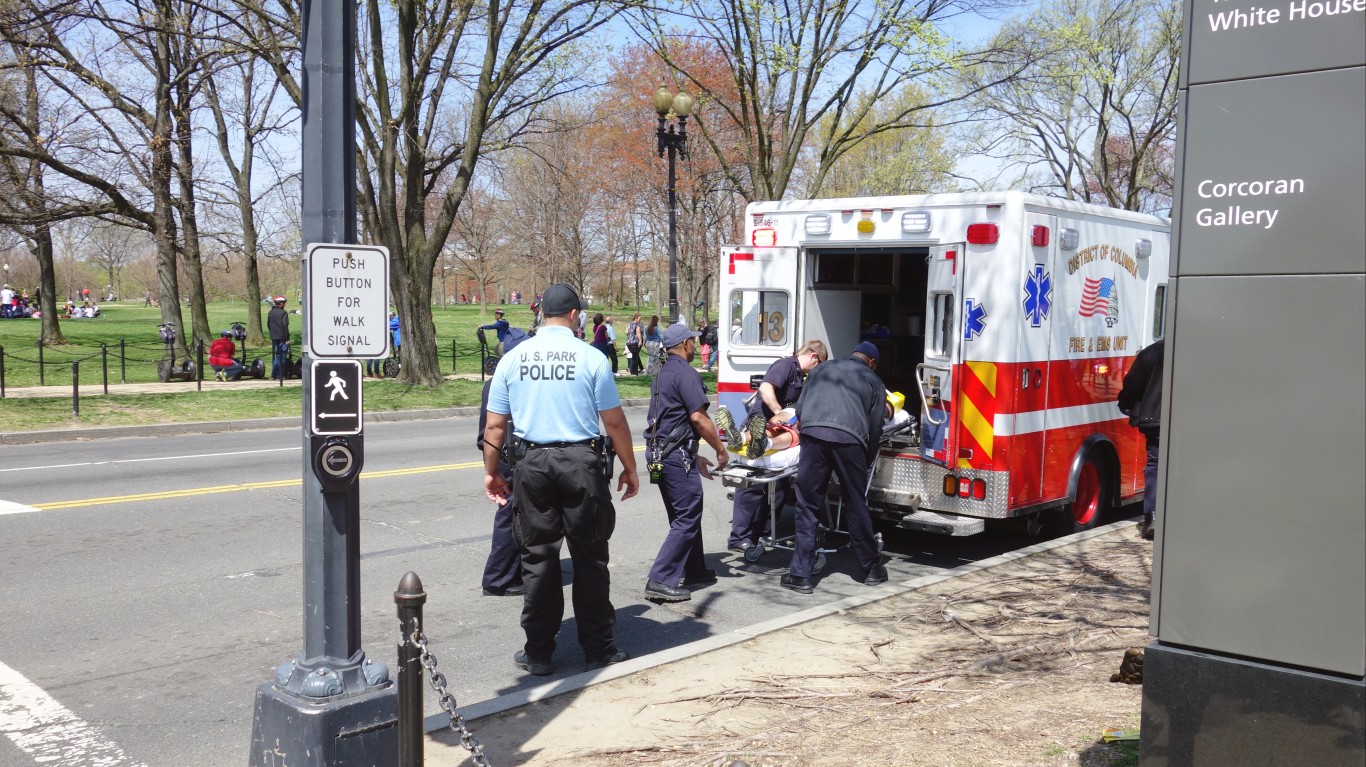
District of Columbia
> Flu-like illness activity level: Very High
> Flu-like symptoms in week ending Nov 26: 10.3% of 3,808 patients
> Flu activity baseline during offseason for Region 3: 2.1% of patients
> 65 and over population: 12.8% (2nd lowest)
> 5 and under population: 6.1% (8th highest)
[in-text-ad-2]

Florida
> Flu-like illness activity level: High
> Flu-like symptoms in week ending Nov 26: 5.9% of 234,502 patients
> Flu activity baseline during offseason for Region 4: 3.1% of patients
> 65 and over population: 21.1% (2nd highest)
> 5 and under population: 5.0% (9th lowest)

Georgia
> Flu-like illness activity level: Very High
> Flu-like symptoms in week ending Nov 26: 6.8% of 76,092 patients
> Flu activity baseline during offseason for Region 4: 3.1% of patients
> 65 and over population: 14.7% (5th lowest)
> 5 and under population: 5.8% (16th highest)
[in-text-ad]

Hawaii
> Flu-like illness activity level: Moderate
> Flu-like symptoms in week ending Nov 26: 4.3% of 21,020 patients
> Flu activity baseline during offseason for Region 9: 2.4% of patients
> 65 and over population: 19.6% (7th highest)
> 5 and under population: 5.6% (24th highest)

Idaho
> Flu-like illness activity level: Very High
> Flu-like symptoms in week ending Nov 26: 8.0% of 10,098 patients
> Flu activity baseline during offseason for Region 10: 1.8% of patients
> 65 and over population: 16.5% (15th lowest)
> 5 and under population: 5.9% (12th highest)

Illinois
> Flu-like illness activity level: Very High
> Flu-like symptoms in week ending Nov 26: 6.6% of 76,504 patients
> Flu activity baseline during offseason for Region 5: 2.5% of patients
> 65 and over population: 16.6% (18th lowest)
> 5 and under population: 5.6% (22nd lowest)
[in-text-ad-2]
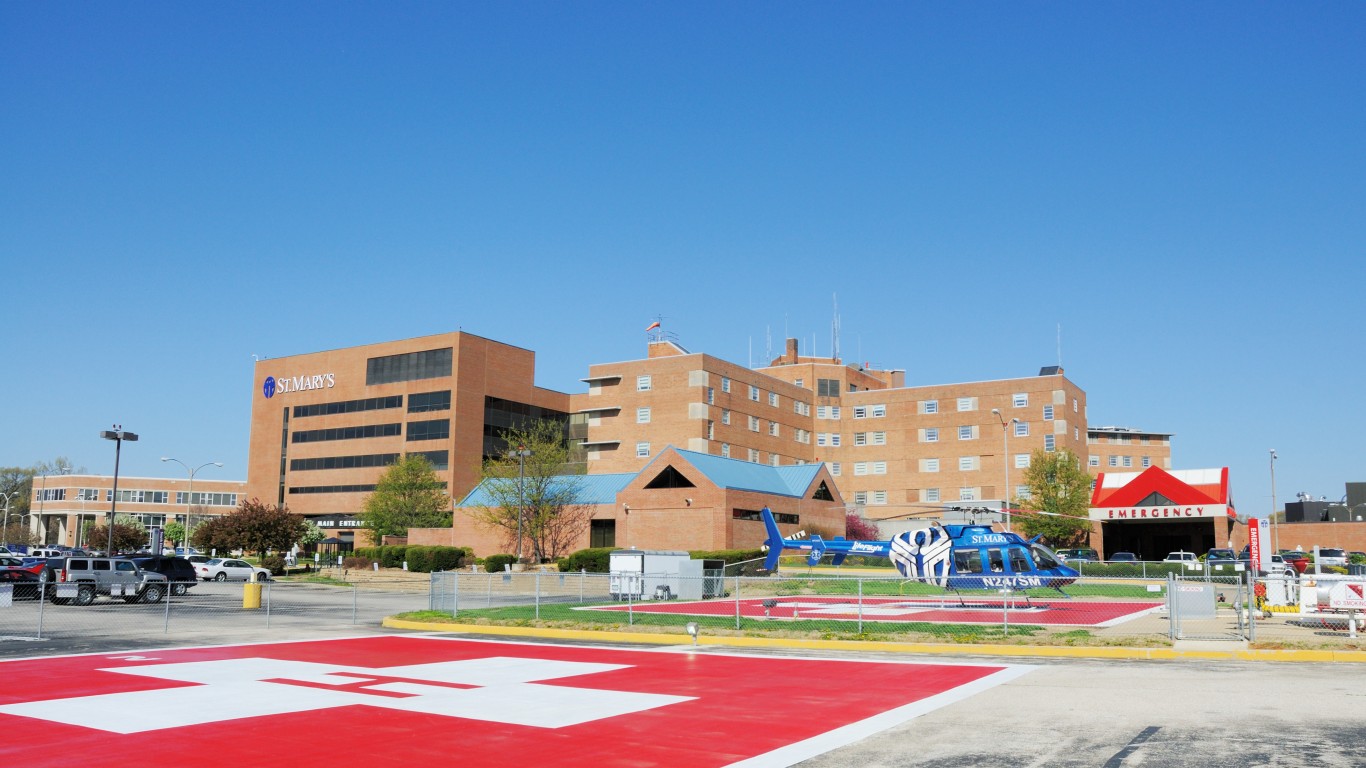
Indiana
> Flu-like illness activity level: Very High
> Flu-like symptoms in week ending Nov 26: 6.3% of 59,154 patients
> Flu activity baseline during offseason for Region 5: 2.5% of patients
> 65 and over population: 16.4% (13th lowest)
> 5 and under population: 6.0% (11th highest)
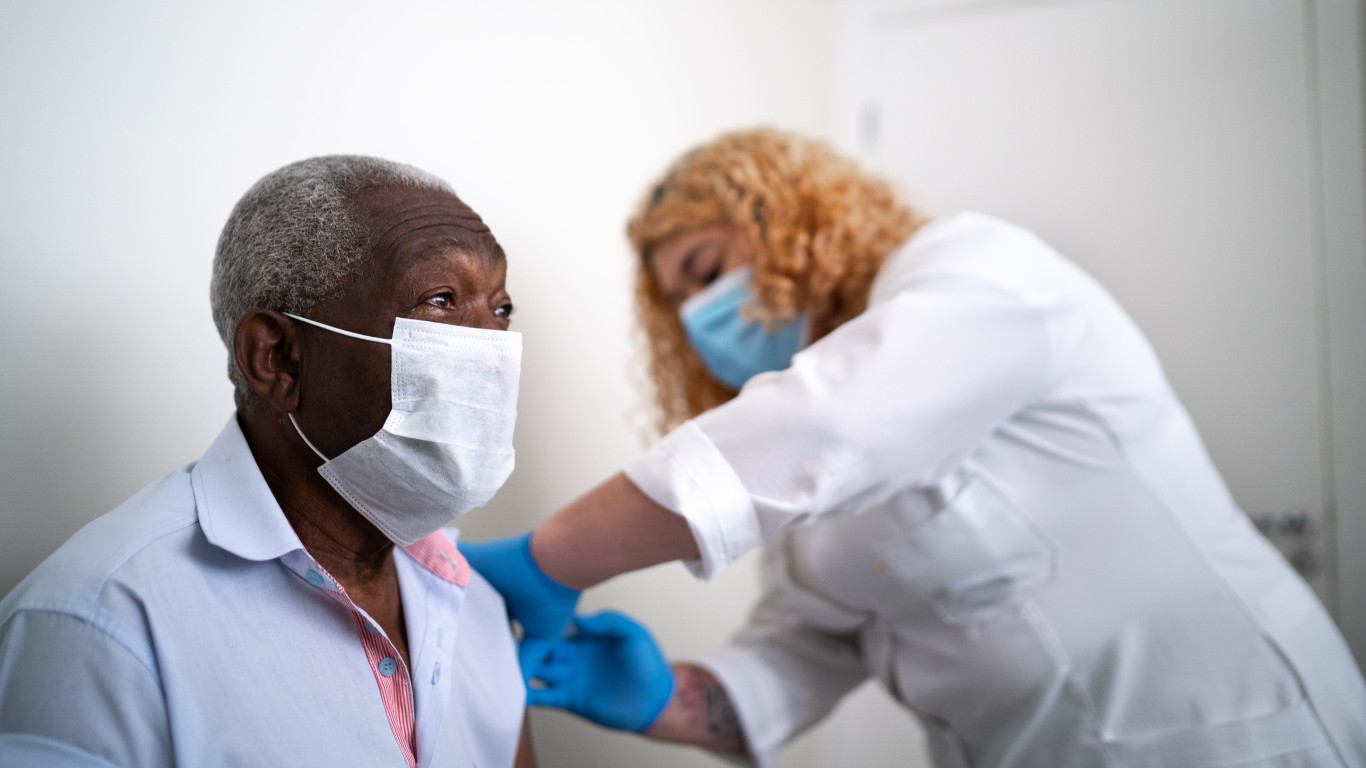
Iowa
> Flu-like illness activity level: High
> Flu-like symptoms in week ending Nov 26: 5.8% of 2,983 patients
> Flu activity baseline during offseason for Region 7: 1.8% of patients
> 65 and over population: 17.8% (20th highest)
> 5 and under population: 5.9% (15th highest)
[in-text-ad]
Kansas
> Flu-like illness activity level: Very High
> Flu-like symptoms in week ending Nov 26: 8.0% of 17,878 patients
> Flu activity baseline during offseason for Region 7: 1.8% of patients
> 65 and over population: 16.7% (19th lowest)
> 5 and under population: 6.1% (10th highest)

Kentucky
> Flu-like illness activity level: Very High
> Flu-like symptoms in week ending Nov 26: 11.1% of 38,747 patients
> Flu activity baseline during offseason for Region 4: 3.1% of patients
> 65 and over population: 17.0% (25th lowest)
> 5 and under population: 5.7% (19th highest)
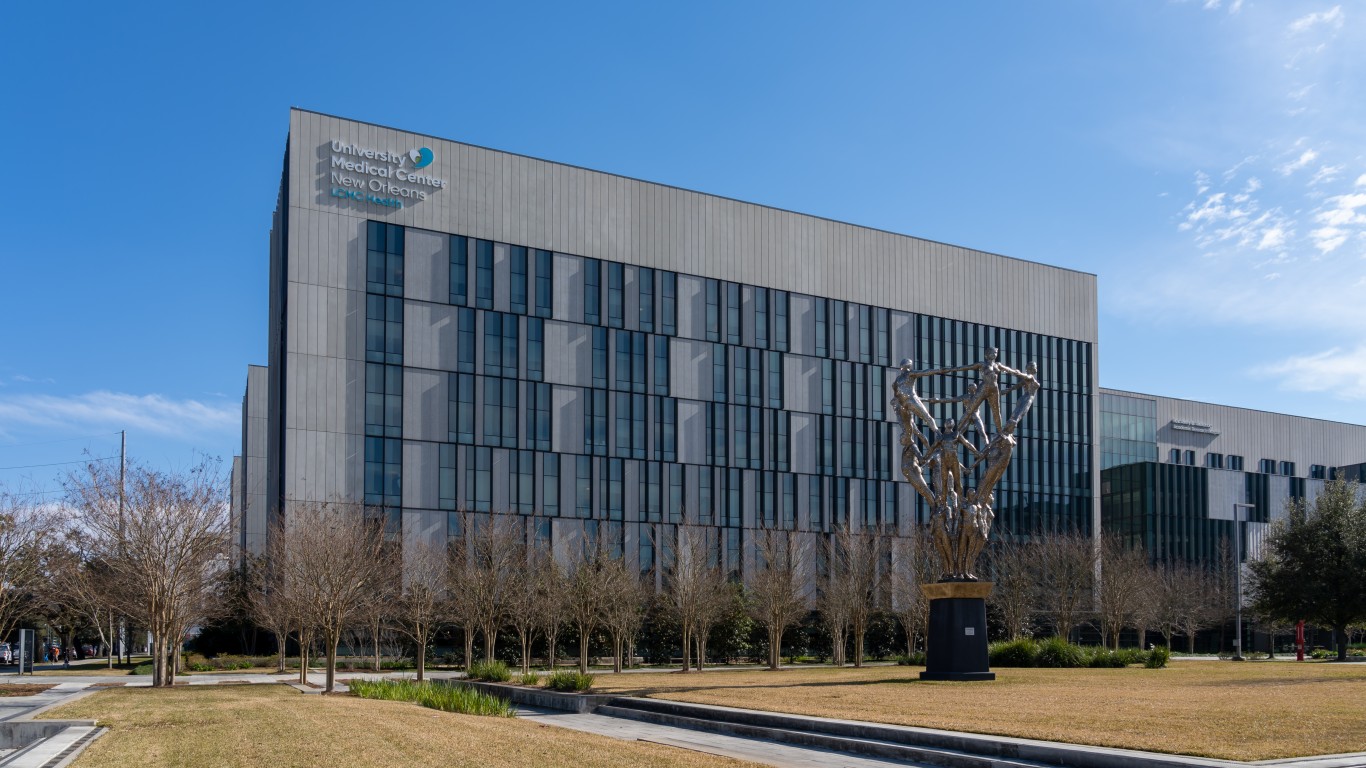
Louisiana
> Flu-like illness activity level: Very High
> Flu-like symptoms in week ending Nov 26: 5.7% of 44,573 patients
> Flu activity baseline during offseason for Region 6: 3.9% of patients
> 65 and over population: 16.6% (17th lowest)
> 5 and under population: 6.1% (7th highest)
[in-text-ad-2]

Maine
> Flu-like illness activity level: High
> Flu-like symptoms in week ending Nov 26: 4.2% of 13,981 patients
> Flu activity baseline during offseason for Region 1: 2.0% of patients
> 65 and over population: 21.7% (the highest)
> 5 and under population: 4.4% (2nd lowest)

Maryland
> Flu-like illness activity level: Very High
> Flu-like symptoms in week ending Nov 26: 7.3% of 43,195 patients
> Flu activity baseline during offseason for Region 3: 2.1% of patients
> 65 and over population: 16.3% (12th lowest)
> 5 and under population: 5.7% (22nd highest)
[in-text-ad]

Massachusetts
> Flu-like illness activity level: High
> Flu-like symptoms in week ending Nov 26: 4.2% of 69,346 patients
> Flu activity baseline during offseason for Region 1: 2.0% of patients
> 65 and over population: 17.4% (25th highest)
> 5 and under population: 5.0% (7th lowest)
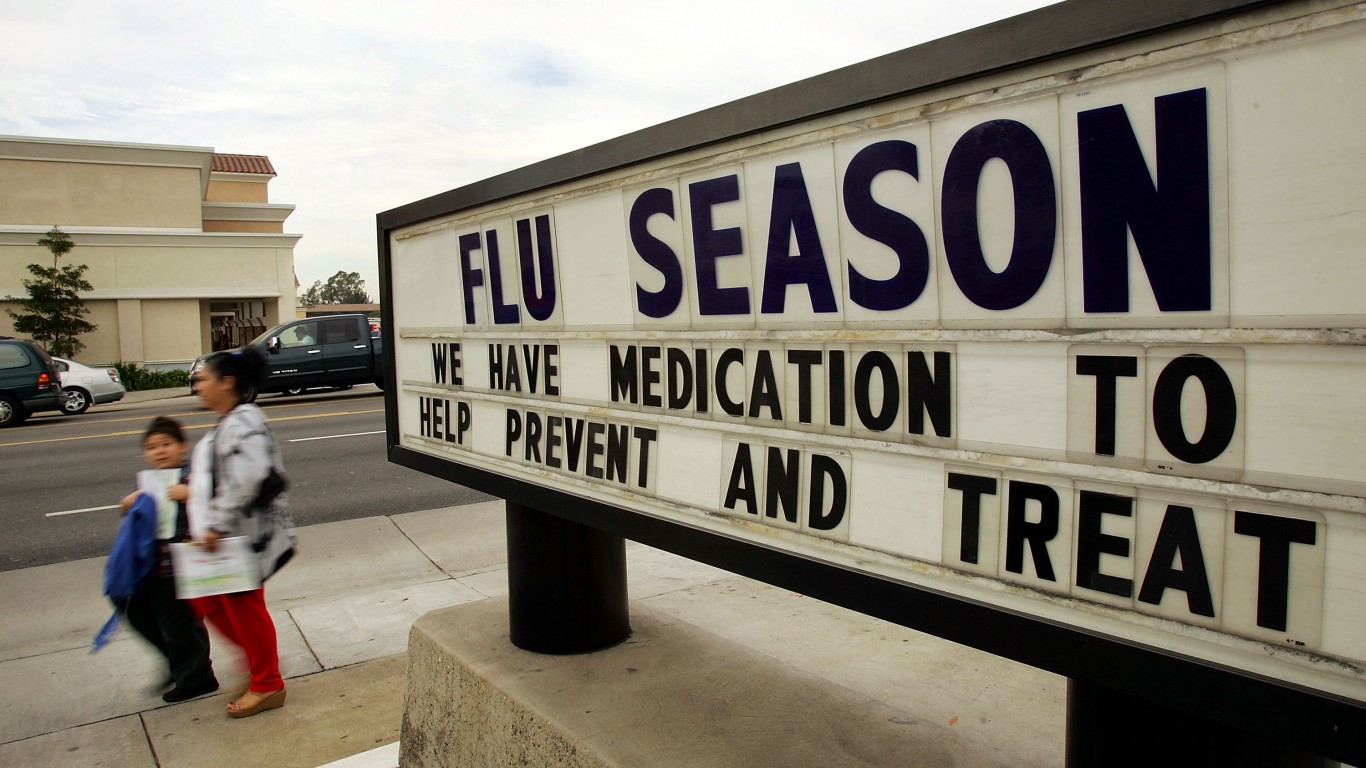
Michigan
> Flu-like illness activity level: Low
> Flu-like symptoms in week ending Nov 26: 2.4% of 83,737 patients
> Flu activity baseline during offseason for Region 5: 2.5% of patients
> 65 and over population: 18.1% (15th highest)
> 5 and under population: 5.4% (17th lowest)
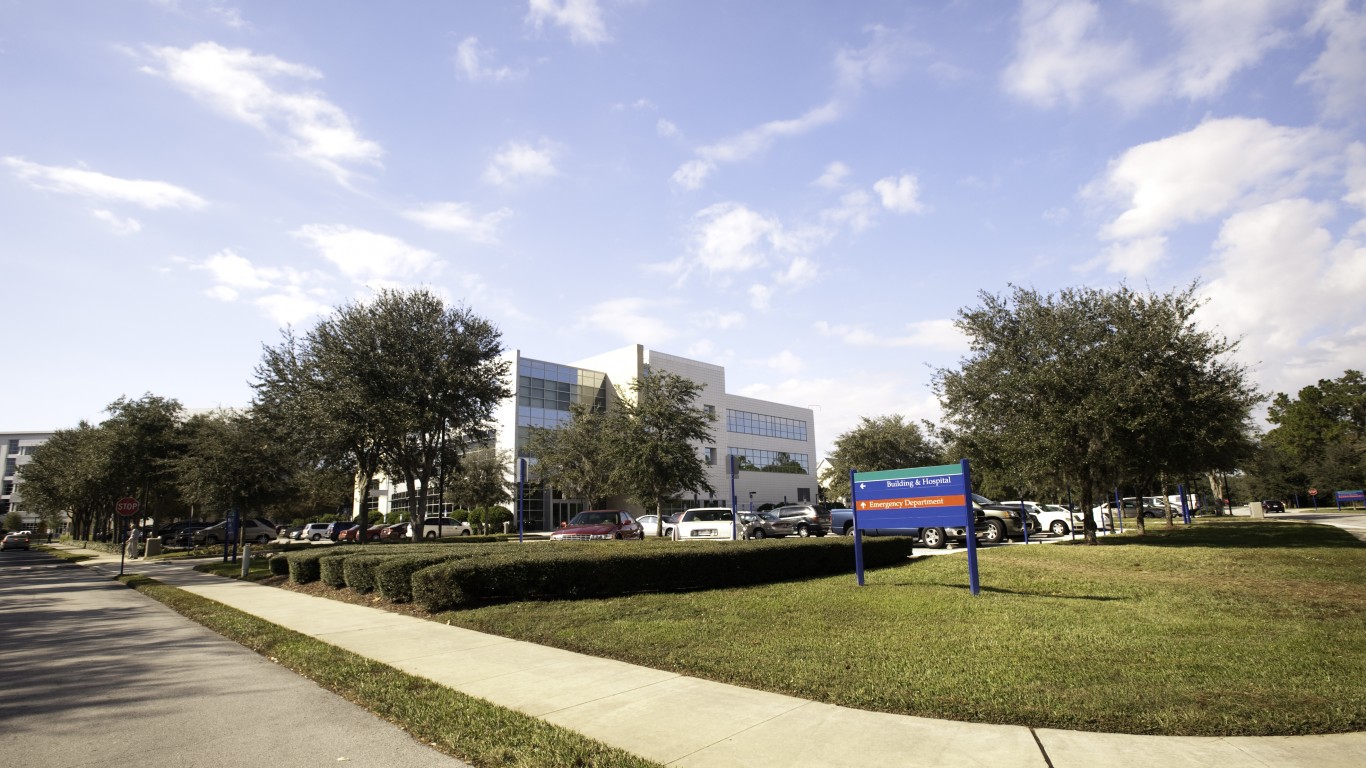
Minnesota
> Flu-like illness activity level: High
> Flu-like symptoms in week ending Nov 26: 5.8% of 27,957 patients
> Flu activity baseline during offseason for Region 5: 2.5% of patients
> 65 and over population: 16.8% (20th lowest)
> 5 and under population: 5.8% (17th highest)
[in-text-ad-2]

Mississippi
> Flu-like illness activity level: Very High
> Flu-like symptoms in week ending Nov 26: 8.9% of 12,757 patients
> Flu activity baseline during offseason for Region 4: 3.1% of patients
> 65 and over population: 16.8% (21st lowest)
> 5 and under population: 5.9% (14th highest)

Missouri
> Flu-like illness activity level: Very High
> Flu-like symptoms in week ending Nov 26: 5.5% of 31,300 patients
> Flu activity baseline during offseason for Region 7: 1.8% of patients
> 65 and over population: 17.6% (22nd highest)
> 5 and under population: 5.7% (20th highest)
[in-text-ad]

Montana
> Flu-like illness activity level: High
> Flu-like symptoms in week ending Nov 26: 5.0% of 6,098 patients
> Flu activity baseline during offseason for Region 8: 2.8% of patients
> 65 and over population: 19.7% (6th highest)
> 5 and under population: 5.1% (10th lowest)

Nebraska
> Flu-like illness activity level: Very High
> Flu-like symptoms in week ending Nov 26: 10.6% of 15,211 patients
> Flu activity baseline during offseason for Region 7: 1.8% of patients
> 65 and over population: 16.4% (14th lowest)
> 5 and under population: 6.3% (5th highest)

Nevada
> Flu-like illness activity level: Very High
> Flu-like symptoms in week ending Nov 26: 5.6% of 11,850 patients
> Flu activity baseline during offseason for Region 9: 2.4% of patients
> 65 and over population: 16.5% (16th lowest)
> 5 and under population: 5.6% (26th highest)
[in-text-ad-2]
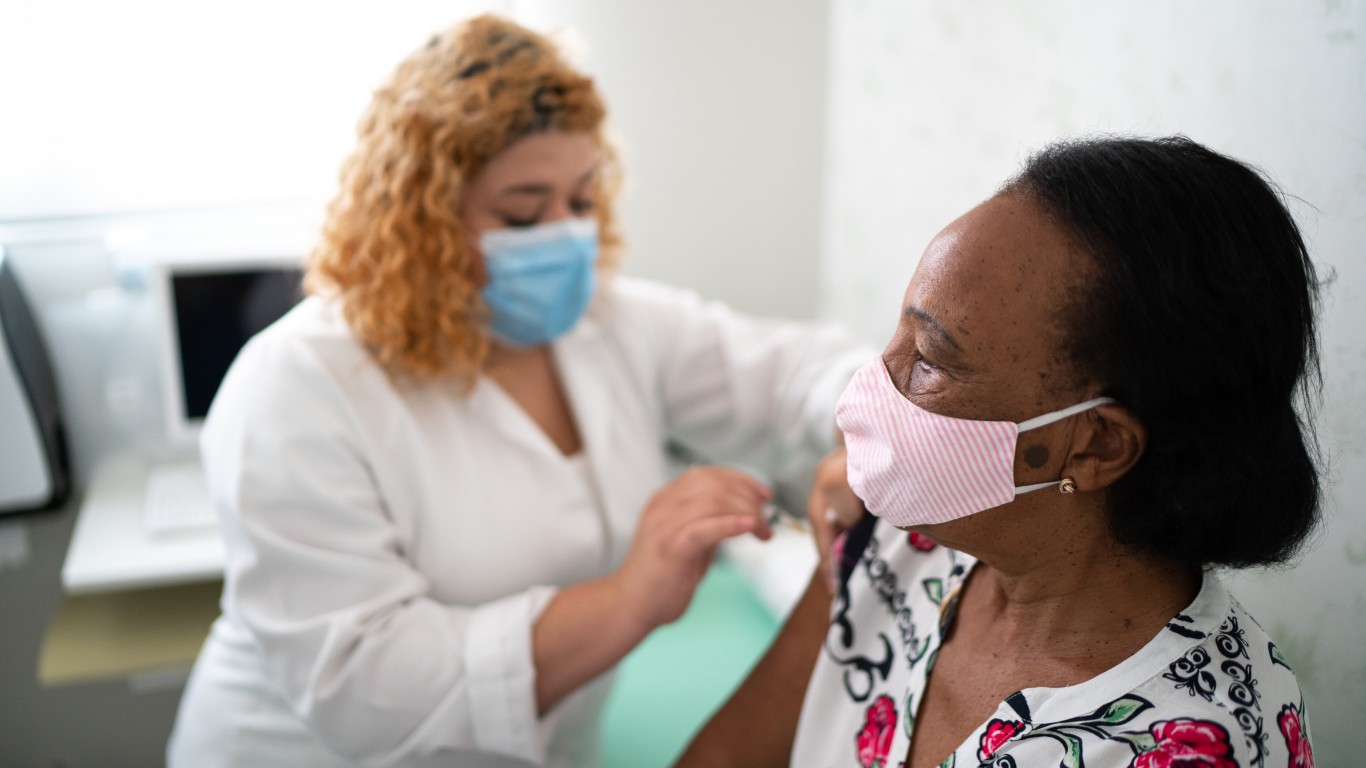
New Hampshire
> Flu-like illness activity level: Minimal
> Flu-like symptoms in week ending Nov 26: 0.9% of 691 patients
> Flu activity baseline during offseason for Region 1: 2.0% of patients
> 65 and over population: 19.3% (8th highest)
> 5 and under population: 4.5% (3rd lowest)

New Jersey
> Flu-like illness activity level: Very High
> Flu-like symptoms in week ending Nov 26: 9.0% of 29,776 patients
> Flu activity baseline during offseason for Region 2: 3.4% of patients
> 65 and over population: 16.9% (22nd lowest)
> 5 and under population: 5.6% (24th lowest)
[in-text-ad]

New Mexico
> Flu-like illness activity level: Very High
> Flu-like symptoms in week ending Nov 26: 14.3% of 21,162 patients
> Flu activity baseline during offseason for Region 6: 3.9% of patients
> 65 and over population: 18.5% (12th highest)
> 5 and under population: 5.4% (18th lowest)
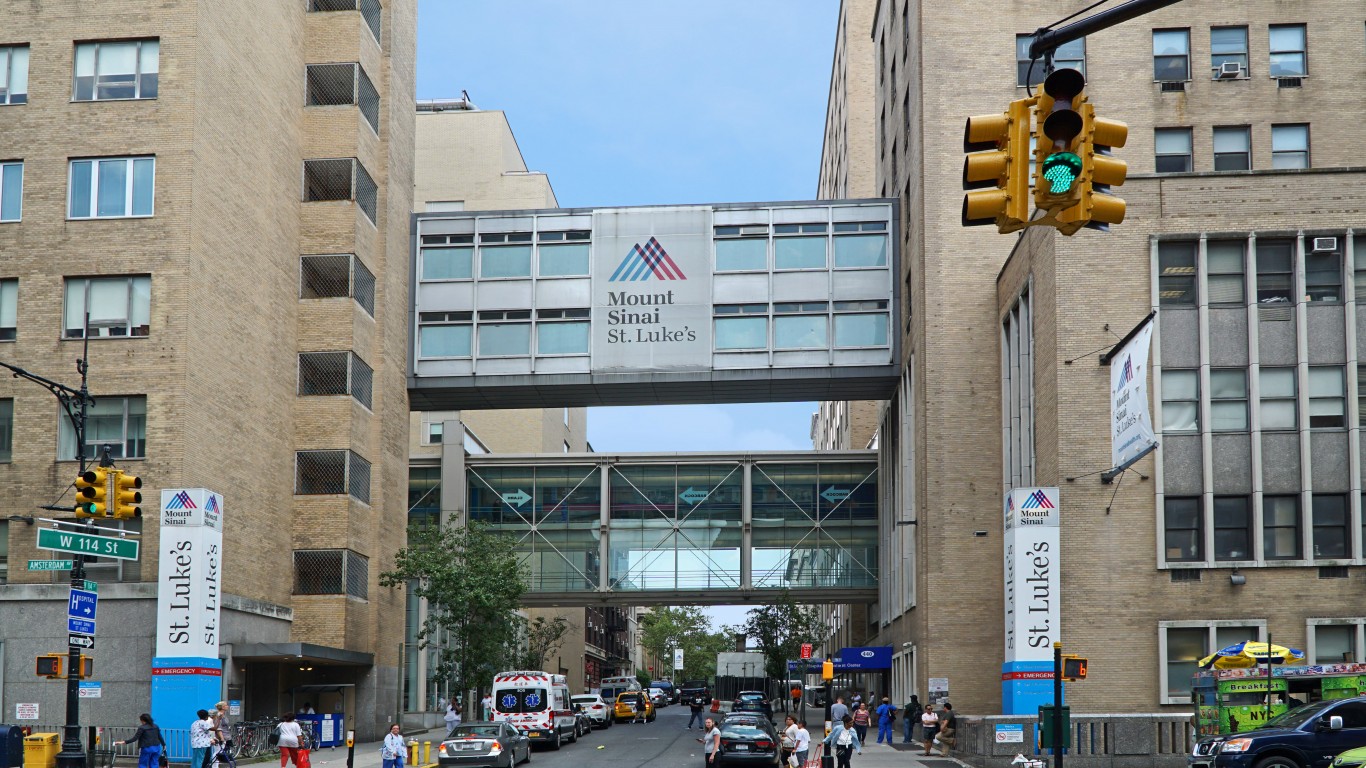
New York
> Flu-like illness activity level: High
> Flu-like symptoms in week ending Nov 26: 5.2% of 56,697 patients
> Flu activity baseline during offseason for Region 2: 3.4% of patients
> 65 and over population: 17.5% (24th highest)
> 5 and under population: 5.5% (19th lowest)

North Carolina
> Flu-like illness activity level: Very High
> Flu-like symptoms in week ending Nov 26: 6.2% of 90,014 patients
> Flu activity baseline during offseason for Region 4: 3.1% of patients
> 65 and over population: 17.0% (24th lowest)
> 5 and under population: 5.5% (20th lowest)
[in-text-ad-2]

North Dakota
> Flu-like illness activity level: High
> Flu-like symptoms in week ending Nov 26: 5.4% of 3,093 patients
> Flu activity baseline during offseason for Region 8: 2.8% of patients
> 65 and over population: 16.0% (8th lowest)
> 5 and under population: 6.6% (2nd highest)

Ohio
> Flu-like illness activity level: Very High
> Flu-like symptoms in week ending Nov 26: 10.7% of 39,642 patients
> Flu activity baseline during offseason for Region 5: 2.5% of patients
> 65 and over population: 17.8% (19th highest)
> 5 and under population: 5.7% (23rd highest)
[in-text-ad]
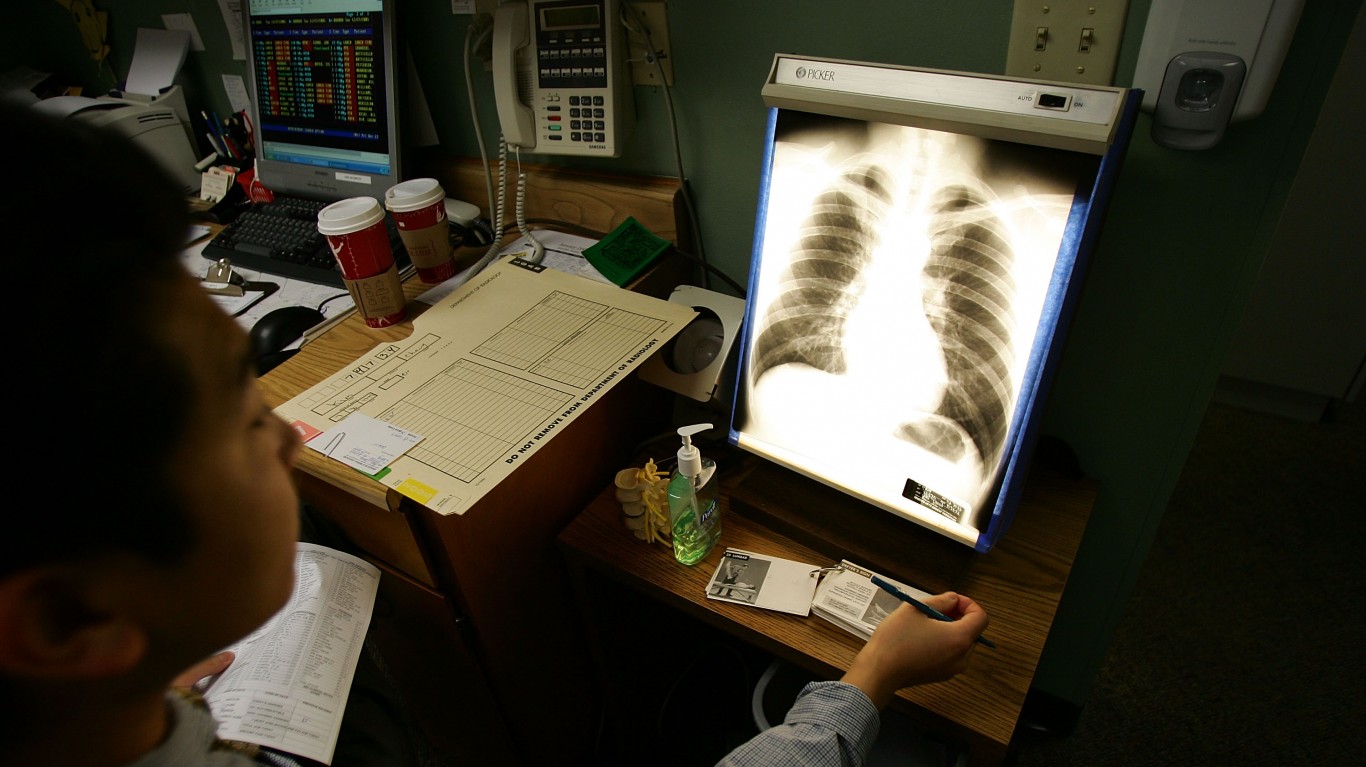
Oklahoma
> Flu-like illness activity level: Very High
> Flu-like symptoms in week ending Nov 26: 6.7% of 19,734 patients
> Flu activity baseline during offseason for Region 6: 3.9% of patients
> 65 and over population: 16.2% (10th lowest)
> 5 and under population: 6.1% (9th highest)
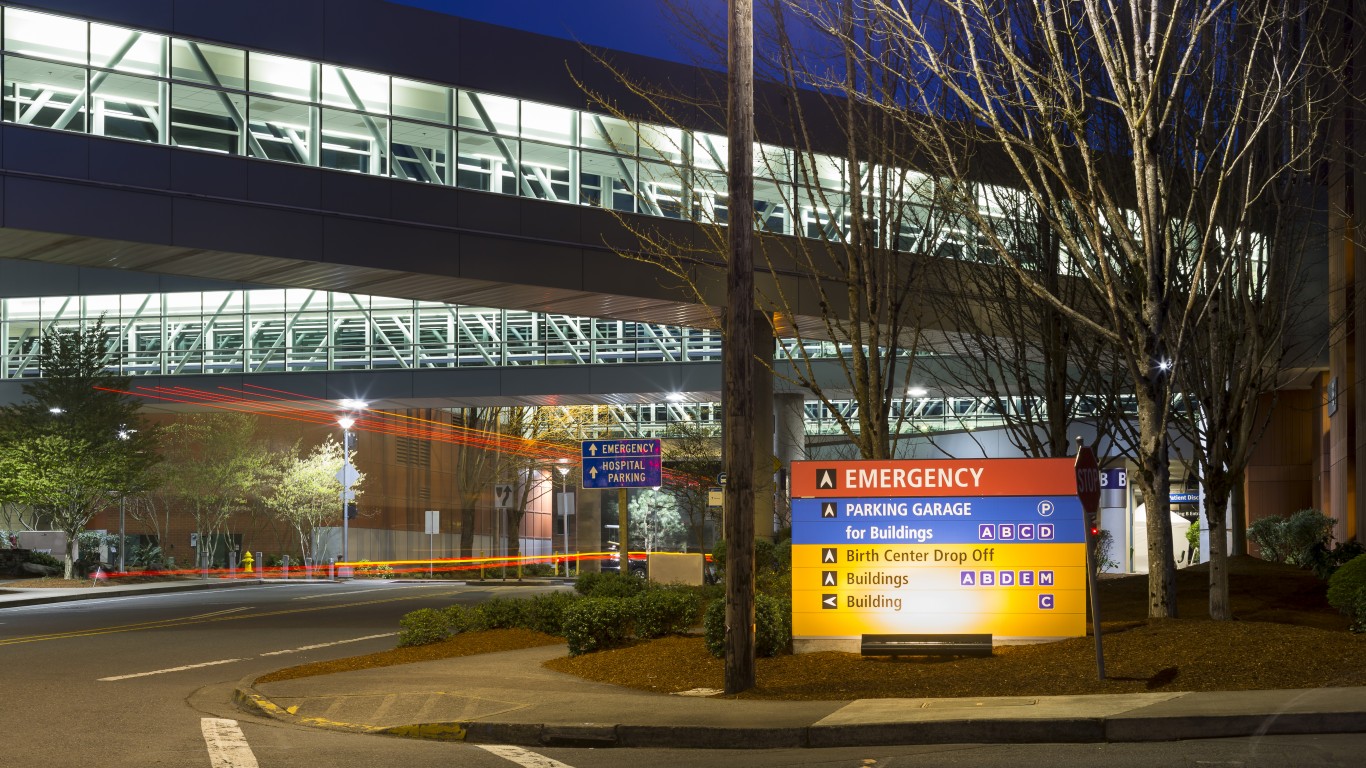
Oregon
> Flu-like illness activity level: Very High
> Flu-like symptoms in week ending Nov 26: 5.5% of 44,719 patients
> Flu activity baseline during offseason for Region 10: 1.8% of patients
> 65 and over population: 18.6% (11th highest)
> 5 and under population: 5.0% (6th lowest)

Pennsylvania
> Flu-like illness activity level: High
> Flu-like symptoms in week ending Nov 26: 4.2% of 65,119 patients
> Flu activity baseline during offseason for Region 3: 2.1% of patients
> 65 and over population: 19.0% (9th highest)
> 5 and under population: 5.2% (12th lowest)
[in-text-ad-2]
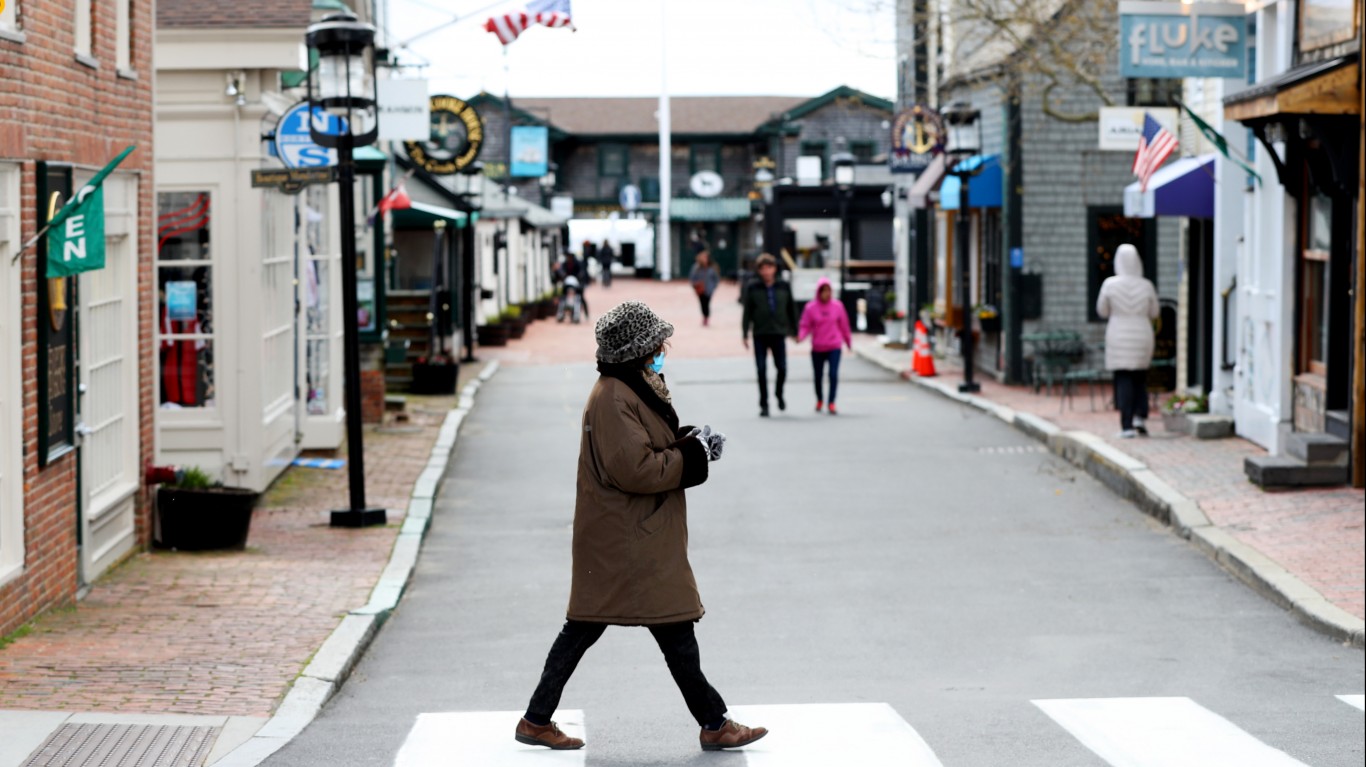
Rhode Island
> Flu-like illness activity level: High
> Flu-like symptoms in week ending Nov 26: 3.5% of 11,496 patients
> Flu activity baseline during offseason for Region 1: 2.0% of patients
> 65 and over population: 18.3% (14th highest)
> 5 and under population: 4.8% (4th lowest)

South Carolina
> Flu-like illness activity level: Very High
> Flu-like symptoms in week ending Nov 26: 8.9% of 33,217 patients
> Flu activity baseline during offseason for Region 4: 3.1% of patients
> 65 and over population: 18.6% (10th highest)
> 5 and under population: 5.3% (15th lowest)
[in-text-ad]
South Dakota
> Flu-like illness activity level: High
> Flu-like symptoms in week ending Nov 26: 3.3% of 8,646 patients
> Flu activity baseline during offseason for Region 8: 2.8% of patients
> 65 and over population: 17.6% (21st highest)
> 5 and under population: 6.5% (3rd highest)

Tennessee
> Flu-like illness activity level: Very High
> Flu-like symptoms in week ending Nov 26: 13.7% of 34,804 patients
> Flu activity baseline during offseason for Region 4: 3.1% of patients
> 65 and over population: 17.0% (23rd lowest)
> 5 and under population: 5.7% (21st highest)
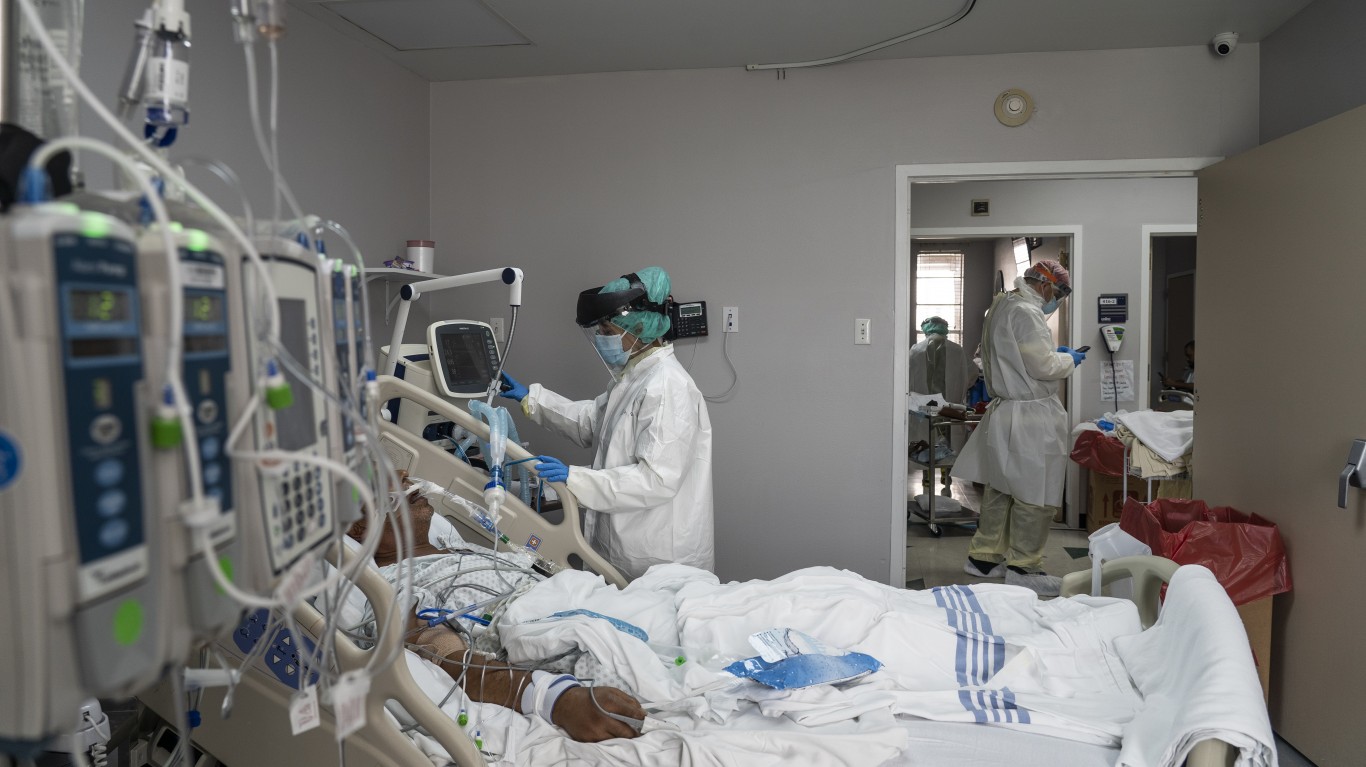
Texas
> Flu-like illness activity level: Very High
> Flu-like symptoms in week ending Nov 26: 9.0% of 51,244 patients
> Flu activity baseline during offseason for Region 6: 3.9% of patients
> 65 and over population: 13.2% (3rd lowest)
> 5 and under population: 6.4% (4th highest)
[in-text-ad-2]
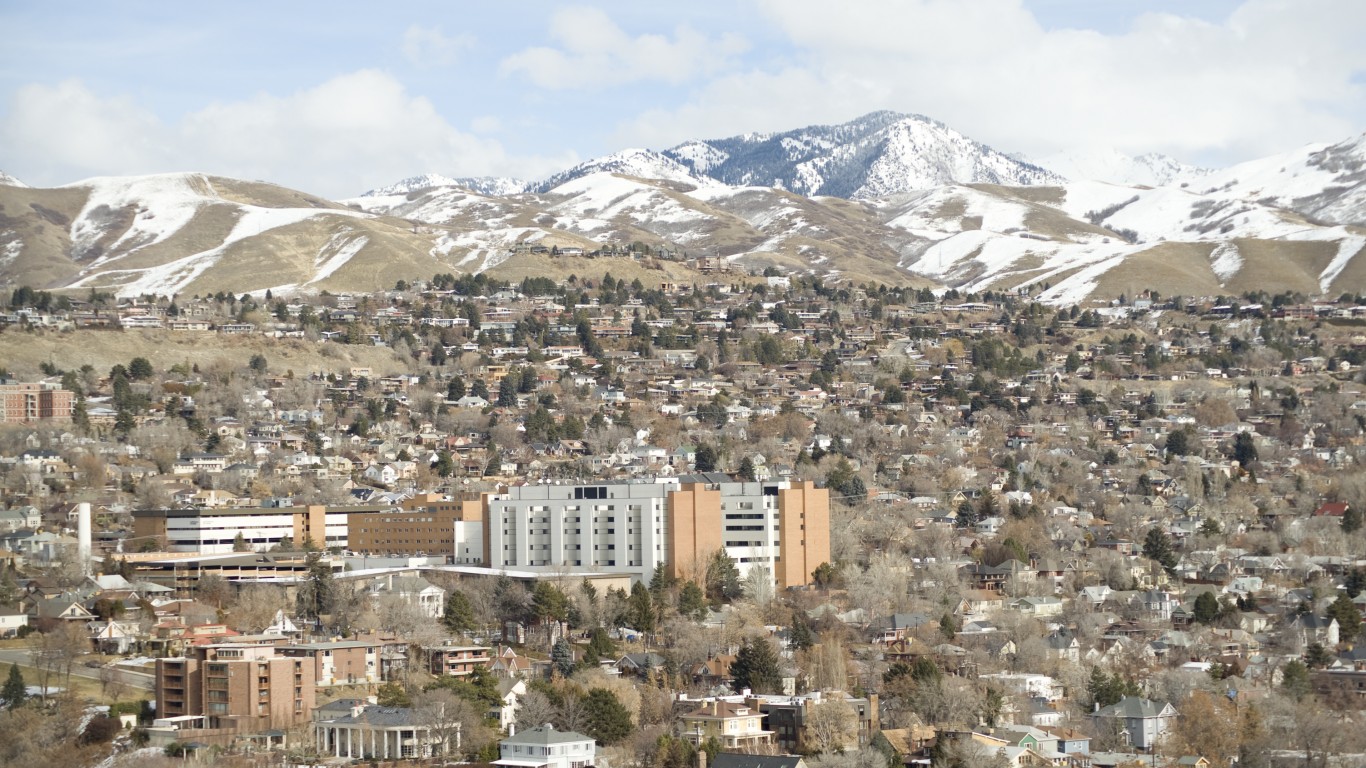
Utah
> Flu-like illness activity level: High
> Flu-like symptoms in week ending Nov 26: 5.5% of 18,338 patients
> Flu activity baseline during offseason for Region 8: 2.8% of patients
> 65 and over population: 11.6% (the lowest)
> 5 and under population: 7.0% (the highest)
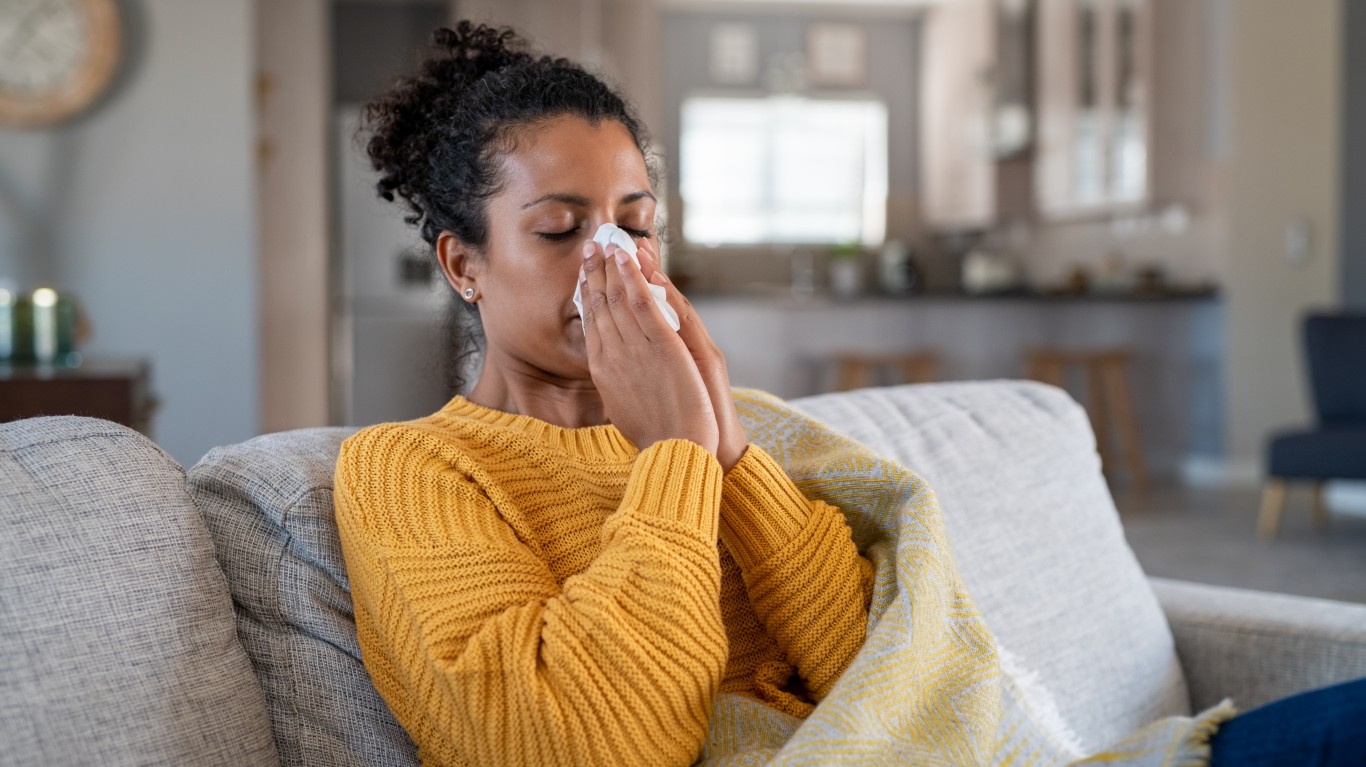
Vermont
> Flu-like illness activity level: Low
> Flu-like symptoms in week ending Nov 26: 2.2% of 4,317 patients
> Flu activity baseline during offseason for Region 1: 2.0% of patients
> 65 and over population: 20.6% (4th highest)
> 5 and under population: 4.2% (the lowest)
[in-text-ad]
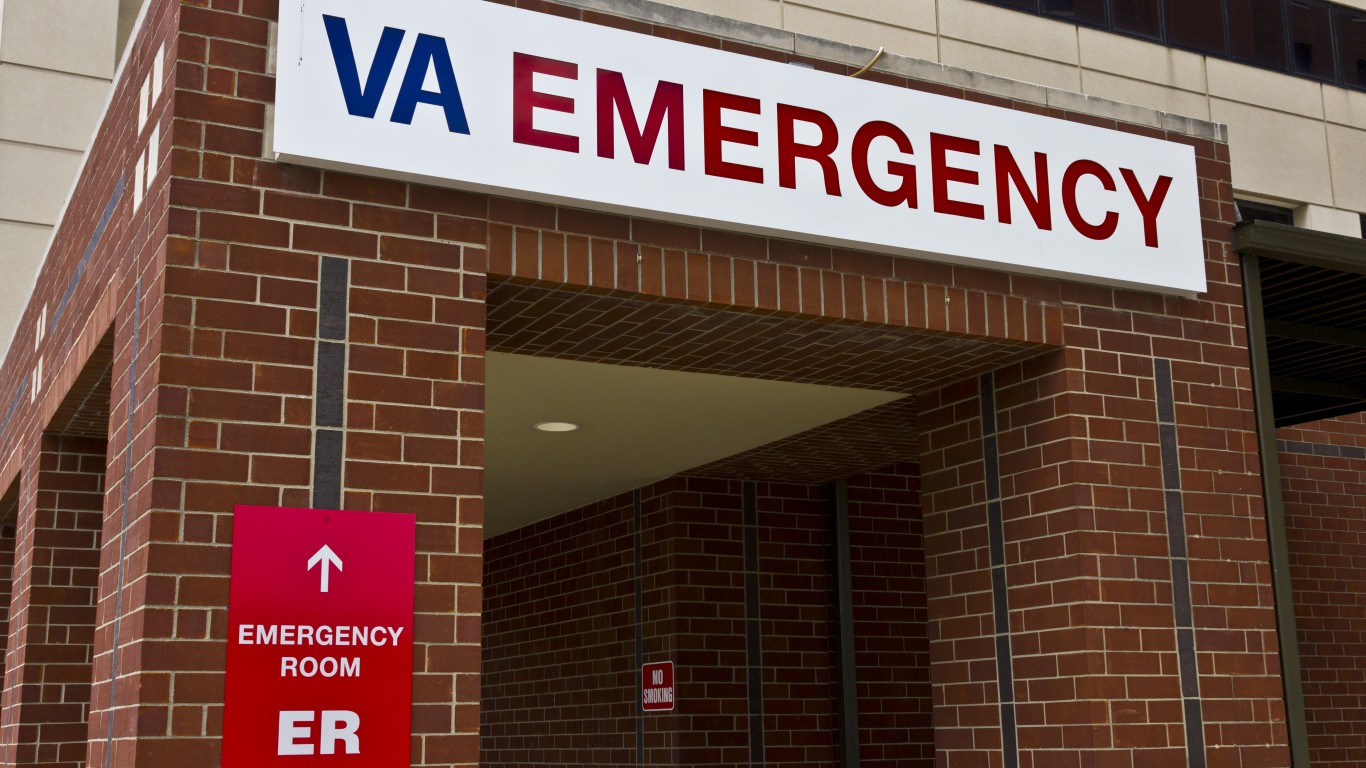
Virginia
> Flu-like illness activity level: Very High
> Flu-like symptoms in week ending Nov 26: 9.2% of 115,396 patients
> Flu activity baseline during offseason for Region 3: 2.1% of patients
> 65 and over population: 16.3% (11th lowest)
> 5 and under population: 5.6% (23rd lowest)

Washington
> Flu-like illness activity level: Very High
> Flu-like symptoms in week ending Nov 26: 12.9% of 45,967 patients
> Flu activity baseline during offseason for Region 10: 1.8% of patients
> 65 and over population: 16.2% (9th lowest)
> 5 and under population: 5.6% (25th lowest)

West Virginia
> Flu-like illness activity level: Moderate
> Flu-like symptoms in week ending Nov 26: 3.7% of 6,968 patients
> Flu activity baseline during offseason for Region 3: 2.1% of patients
> 65 and over population: 20.7% (3rd highest)
> 5 and under population: 5.0% (8th lowest)
[in-text-ad-2]
Wisconsin
> Flu-like illness activity level: High
> Flu-like symptoms in week ending Nov 26: 4.1% of 20,294 patients
> Flu activity baseline during offseason for Region 5: 2.5% of patients
> 65 and over population: 17.9% (18th highest)
> 5 and under population: 5.3% (16th lowest)
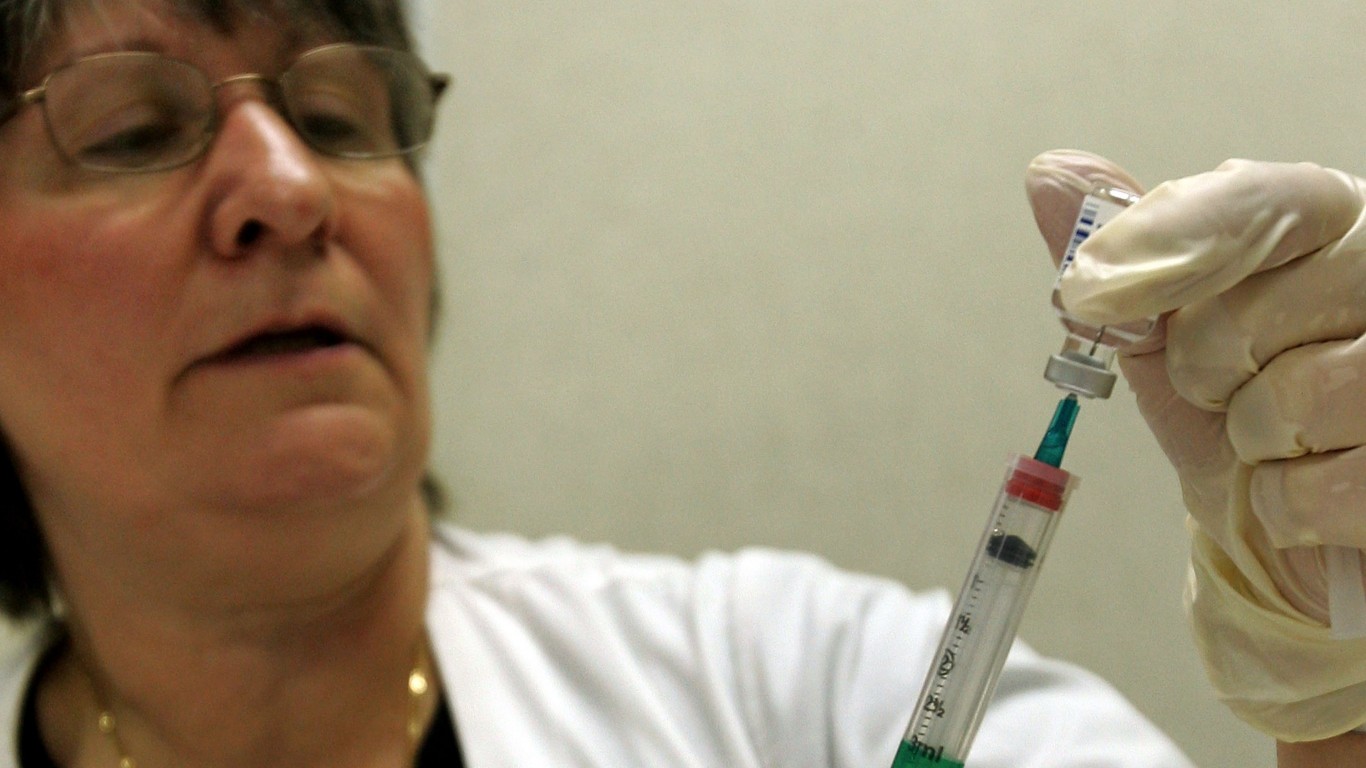
Wyoming
> Flu-like illness activity level: High
> Flu-like symptoms in week ending Nov 26: 7.5% of 2,368 patients
> Flu activity baseline during offseason for Region 8: 2.8% of patients
> 65 and over population: 17.9% (17th highest)
> 5 and under population: 5.2% (11th lowest)
Methodology
To identify the incidence of the flu in every state, 24/7 Tempo reviewed the percentage of outpatient visits with flu-like illnesses (ILI) during the week ending November 26, 2022 from the latest weekly influenza surveillance report prepared by the influenza division of the CDC.
Influenza-like illness (ILI) activity levels (minimal, low, moderate, and high) are based on the difference between current and off-season average proportions of outpatient visits to health providers for flu-like illnesses. These off-season baselines range from 1.1% of patients in the Seattle region (Idaho, Oregon, and Washington) to 3.1% in the New York region (New Jersey and New York). States with high activity levels are those where flu cases have exceeded the respective baseline by the most.
ILI includes hospital visits for respiratory conditions such as fever plus a cough or sore throat, not laboratory-confirmed influenza. Regional baselines used by the CDC are the average percent of patient visits for ILI during non-influenza weeks for the previous three seasons plus two standard deviations.
It is important to note that outbreaks occurring in a single city can cause a state to display high activity levels, and data collected may disproportionately represent certain populations within a state and therefore may not accurately capture influenza activity for the whole state.
Each state’s 65 and over and 5 and under populations were obtained from the U.S. Census Bureau’s 2021 American Community Survey.
Take Charge of Your Retirement In Just A Few Minutes (Sponsor)
Retirement planning doesn’t have to feel overwhelming. The key is finding expert guidance—and SmartAsset’s simple quiz makes it easier than ever for you to connect with a vetted financial advisor.
Here’s how it works:
- Answer a Few Simple Questions. Tell us a bit about your goals and preferences—it only takes a few minutes!
- Get Matched with Vetted Advisors Our smart tool matches you with up to three pre-screened, vetted advisors who serve your area and are held to a fiduciary standard to act in your best interests. Click here to begin
- Choose Your Fit Review their profiles, schedule an introductory call (or meet in person), and select the advisor who feel is right for you.
Why wait? Start building the retirement you’ve always dreamed of. Click here to get started today!
Thank you for reading! Have some feedback for us?
Contact the 24/7 Wall St. editorial team.
 24/7 Wall St.
24/7 Wall St.
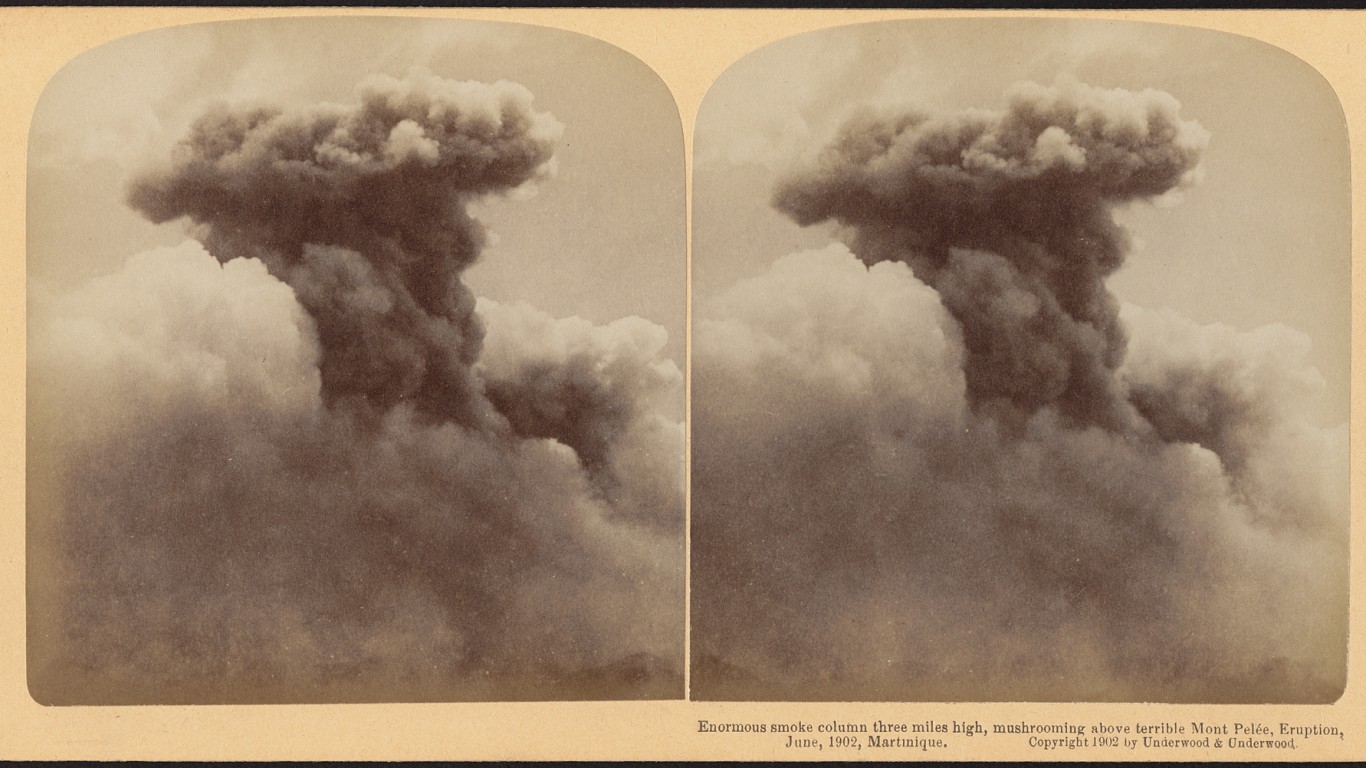 24/7 Wall St.
24/7 Wall St. 24/7 Wall St.
24/7 Wall St.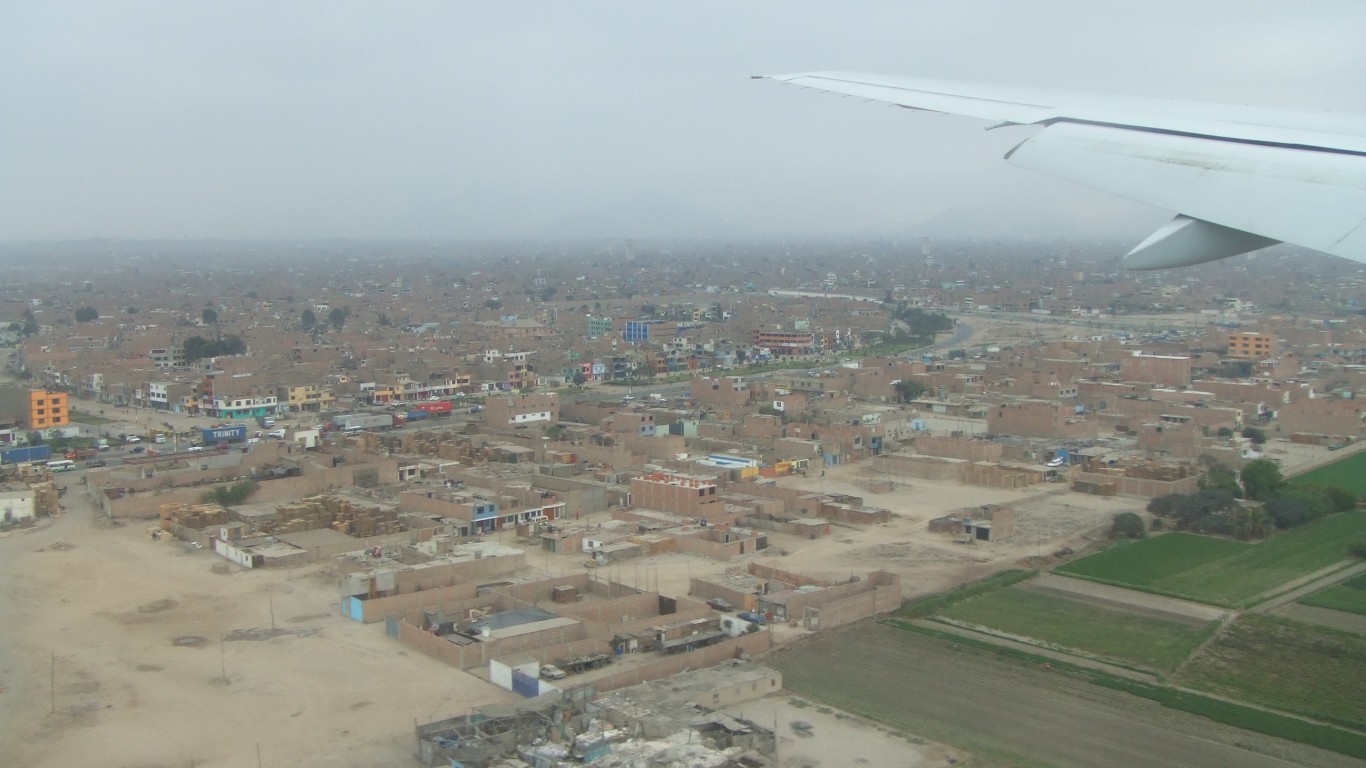 24/7 Wall St.
24/7 Wall St.